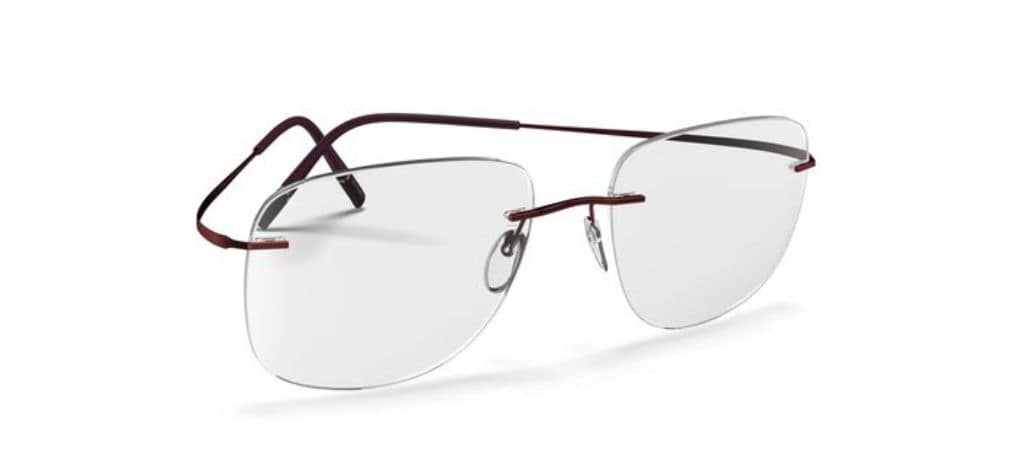With people spending more time than ever in front of screens, digital eye strain has become a major concern. Whether it’s working long hours, binge-watching shows, or gaming late at night, exposure to blue light is linked to eye fatigue, headaches, and disrupted sleep cycles.
For years, blue light glasses have been marketed as a solution, but early models had mixed results. Some users swore by them, while others saw little to no improvement. But with 2025’s advancements in lens technology, coatings, and AI-driven filters, have we finally perfected blue light protection?
Let’s explore the seven biggest breakthroughs in blue light glasses that are making a real difference today.
1. AI-Powered Adaptive Lenses

How They Work
One of the biggest upgrades in 2025’s blue light glasses is AI-powered adaptive lenses. These smart lenses automatically adjust blue light filtering levels based on the time of day and the amount of screen exposure.
Why It Matters
- Reduces eye strain without making screens look unnaturally yellow.
- Automatically increases protection at night to improve sleep.
- Customizes filtering based on your screen time and environment.
These lenses are particularly useful for professionals, gamers, and students who spend hours in front of screens and need personalized protection.
2. Blue Light Blocking Without Yellow Tint
Solving the Biggest Complaint
Early blue light glasses often came with a noticeable yellow tint, making colors appear distorted. However, 2025 has introduced new lens coatings that filter blue light without affecting color perception.
Key Benefits
- Clearer vision with no yellowish haze.
- More comfortable for designers, video editors, and gamers who rely on accurate color representation.
- Blends seamlessly into everyday wear, unlike older versions that looked like specialty lenses.
Now, blue light glasses provide full protection without compromising visual quality.
3. Built-In AR Filters for Digital Screens
The Future of Screen Protection
Instead of just blocking blue light passively, some of the newest blue light glasses in 2025 come with augmented reality (AR) filters that enhance screen visibility.
What’s Different?
- AR technology reduces glare and sharpens text for easier reading.
- Real-time adjustments based on ambient light conditions.
- A “focus boost” mode that makes reading and coding more comfortable for extended periods.
This upgrade is perfect for those who spend hours in front of small text-heavy screens, like programmers, writers, and researchers.
4. Auto-Tinting Lenses for Day & Night Use

A Smarter Approach to Eye Protection
Older blue light glasses only worked at a single filtration level, but now self-tinting technology has been added to automatically adjust throughout the day.
How It Works
- Light-sensitive lenses that reduce eye strain in bright settings.
- Darker tint in the evening to block harmful blue wavelengths linked to sleep disruption.
- Seamless adaptation to different work and home environments.
This upgrade makes blue light glasses more versatile, eliminating the need to switch between different pairs for daytime and nighttime use.
5. Polarized & Blue Light Hybrid Lenses
The Best of Both Worlds
Most blue light glasses have focused only on screens, but what about protection outdoors? New hybrid lenses combine blue light filtering with polarization, making them suitable for both indoor and outdoor use.
Key Features
- Blocks glare from screens, car headlights, and the sun.
- Reduces digital eye strain while also providing UV protection.
- Perfect for people who switch between screens and outdoor environments frequently.
This advancement means one pair of glasses can now serve as both blue light protection and sunglasses, eliminating the need for multiple pairs.
6. Smart Blue Light Glasses with AI Sleep Monitoring
How AI is Helping You Sleep Better
One of the biggest concerns about blue light is its impact on melatonin production and sleep quality. In 2025, some of the latest models include built-in AI sleep tracking that monitors your blue light exposure and gives real-time recommendations.
What’s Included?
- AI-based notifications to remind you to take screen breaks.
- Sleep-enhancing settings that automatically adjust filtering at night.
- Companion apps that provide personalized sleep improvement tips.
For those struggling with poor sleep due to late-night screen use, this feature is a game-changer.
7. Ultra-Thin, Stylish Designs for Everyday Wear

From Techy to Trendy
Early blue light glasses were often bulky and unattractive, but in 2025, fashion meets function. Major eyewear brands are now making ultra-thin, lightweight designs that fit seamlessly into everyday fashion.
What’s Changed?
- Lighter materials make them comfortable for all-day wear.
- Designer collaborations have brought sleek and stylish frames.
- Prescription and non-prescription versions are widely available.
Now, blue light glasses are no longer just a tech accessory—they are a must-have fashion statement.
The Real-Life Benefits of 2025’s Blue Light Glasses
These upgrades aren’t just about fancy tech—they are making real improvements in daily life:
- Better focus at work – Reduced eye fatigue leads to increased productivity.
- Improved sleep cycles – AI adjustments help regulate melatonin levels.
- Comfort for long gaming sessions – Sharper visuals with less eye strain.
- Healthier eyes over time – Protection against digital fatigue and long-term damage.
With these advancements, blue light glasses are no longer just a marketing gimmick—they’re a real solution for digital eye strain.
Buyer’s Guide: How to Choose the Right Blue Light Glasses
If you’re looking to buy a 2025 pair of blue light glasses, keep these tips in mind:
1. Check for Verified Blue Light Filtering
Not all lenses are created equal. Look for certified blue light blocking technology to ensure you’re getting real protection.
2. Consider Adaptive Lenses
If you switch between day and night screen use, auto-tinting or AR-enhanced glasses may be the best investment.
3. Prioritize Comfort & Style
Look for lightweight, well-fitting frames that you can wear all day. Some high-end brands now offer fashion-forward designs without compromising protection.
4. Review Return Policies & Warranties
Since blue light glasses work differently for everyone, opt for brands that offer trials or flexible return policies.
Conclusion: Have Blue Light Glasses Finally Evolved?
With AI-powered lenses, AR filters, and auto-adjusting tints, blue light glasses in 2025 are leagues ahead of their early versions. Whether you’re working, gaming, or just spending too much time on your phone, these upgrades make a real impact on eye health and daily comfort.
Have you tried new-generation blue light glasses? Have they helped reduce your eye strain? Let us know your experience in the comments!

